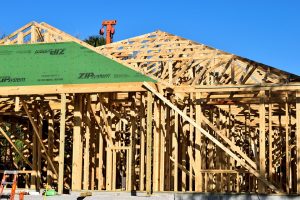Prefrabicated Wooden Homes and Kit Homes: What you Need to Know
 Becoming a homeowner in the traditional way is fast becoming outdated. Consumers are looking for more creative and less expensive ways to own the type of home they truly desire. One solution to buying an existing home that is growing in popularity for a variety of reasons, such as lower cost and faster build times, is the use of kit homes or self build homes. These prefabricated wooden homes and house kits offer many benefits when compared to traditional construction, but as with most things, there are pros and cons, good and bad. Here’s what you need to know about prefabricated wooden homes and kit houses.
Becoming a homeowner in the traditional way is fast becoming outdated. Consumers are looking for more creative and less expensive ways to own the type of home they truly desire. One solution to buying an existing home that is growing in popularity for a variety of reasons, such as lower cost and faster build times, is the use of kit homes or self build homes. These prefabricated wooden homes and house kits offer many benefits when compared to traditional construction, but as with most things, there are pros and cons, good and bad. Here’s what you need to know about prefabricated wooden homes and kit houses.
What a kit home is
If you have ever been into model cars or ship’s, then think of a kit house in the same way. Kit houses first became popular in the early part of the 20th century. Kit houses are different than modular homes or prefabricated wooden homes and give true meaning to the term self build homes. Simply put, a kit houses is a house, offered in a variety of plans and styles, that you build yourself. Everything you need for constructing the home is included in one fixed price. However, this cost usually doesn’t include brick, masonry, or concrete used for a foundation.
Advantages of a kit home are:
-
- Faster build times over traditional construction
- Lower cost since all the materials are supplied and measured before they’re delivered and included in one price
- Many different designs and layouts to choose from which offers a wide choice for individual style and taste.
Some disadvantages of a kit home are:
- Finding a contractor or builder who will take on the project
- Spending time and energy assembling the home yourself
- Finding land to build on
- Keeping track of 10,000 to 30,000 pieces of lumber
What you need to know about prefabricated wooden homes
A prefabricated wooden home is not the same thing as a kit home. In fact, it’s more closely related to a modular home. With a prefabricated home, all of the elements of the home are created in a factory then assembled on site. Basically, it’s a matter of raising prefabricated walls and interior panels on top of a foundation that has already been laid. Prefabricated wooden homes have a proven history of quality and durability, and sustainability as well as offering lower cost and much faster build times than traditional construction methods.
Comments are Disabled